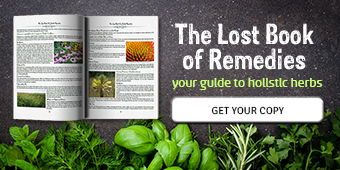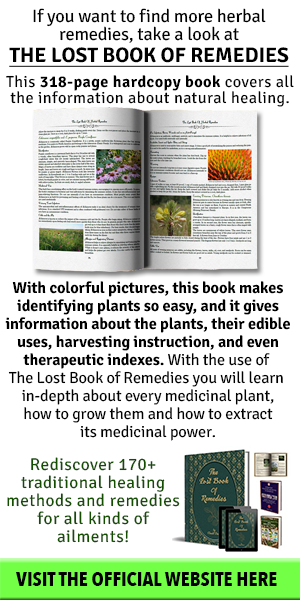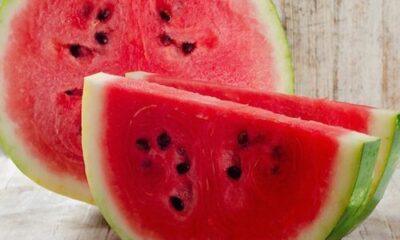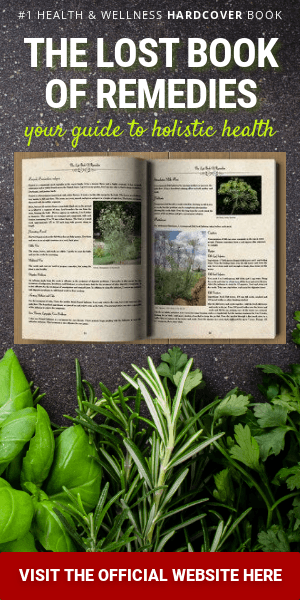Fruits & Veggies
10 Veggies You Can Plant Once and Harvest For Years
Nature is incredibly diverse, just as it is full of overflowing abundance. We don’t always see it, though it is there.
And yet, we often limit ourselves to a handful of well-known fruits and vegetables.
Many vegetables grow as annuals, meaning that they grow for one growing season and then call it quits. You need to sow new seeds the following year in order to regrow that vegetable. But that doesn’t mean every vegetable is an annual. Many fruits and vegetables can be planted once and will continue to grow back year after year, producing healthy, fresh food for you and your family. Here are 10 of our favorites.
Rhubarb
If you love rhubarb jams, pies, and other sweets, then it makes absolute sense for you to grow a rhubarb plant of your own. Rhubarb is a perennial vegetable that will keep coming back year after year. Ideally, rhubarb crowns are planted in the early spring as soon as the ground has thawed. Rhubarb grows well in full sunlight and well-drained, fertile soil. If you plan to grow more than one, set them approximately four feet apart. These plants grow pretty large!
Asparagus
I love asparagus, but the truth is, the store-bought stuff doesn’t have anywhere near the flavor of freshly picked asparagus. Asparagus grows well in cooler climates with cold winters and dry summers. Asparagus prefers full sunshine and lighter, well-drained soil, making raised beds ideal for growing this vegetable. Asparagus grows as either a male or a female plant. Male plants tend to be more productive, so try to find an all-male variety of asparagus to plant.
Jerusalem Artichokes
Jerusalem artichokes are a bit different from standard artichokes. The artichokes you find in the store are the flower of the artichoke plant, but Jerusalem artichokes are actually a tuber, not unlike a potato. Jerusalem artichokes love well-drained, alkaline soils. They’re a productive plant, each one producing upwards of 20 tubers. The plant is ready for harvest after your first frost. Jerusalem artichokes can grow to be pretty big, so plant each tuber approximately six inches apart from one another. Enjoy this delicious prebiotic food!
Kale
Kale is cold-hardy and remarkably easy to grow. Get your kale plant started in early spring, 3 to 5 weeks before your last frost. Be careful though, if the temperatures are likely to drop into the 20s, give them some cover to protect them from the hard frost. Kale can also be planted in the fall, 6 to 8 weeks before the first frost. It can handle full sun but will do better in partial shade. Kale grows especially well in nitrogen-rich soil.
Horseradish
Horseradish is a no-nonsense vegetable that grows easily just about anywhere under any circumstance. They like full sun and fertile soil but can survive in just about any condition. Plant a root piece in the spring and it’ll be ready to harvest after your first frost in fall. In the fall, remove all foliage to help promote additional root growth, leading to larger yields in the future.
Sorrel
Sorrel is a less commonly grown vegetable, making it an awesome addition to your garden for its variety. Sorrel is a leafy green known for a lemony, tart flavor. Sorrel, like kale, appreciates cooler climates and can be harvested in spring and fall for the best flavor. They grow to be about a foot tall but can take up two feet in width. Sorrel prefers to grow in full sun but can tolerate a bit of shade.
Artichokes
Artichokes are grown for their large, edible flower buds. These plants are perennials, but won’t last as long as asparagus. Typically, an artichoke plant will produce for about 5 years before dying. They grow large, so plant each one about 4 feet apart. Artichoke buds can be harvested when they’re about three inches in diameter.
Chives
Chives are one of those herbs that I don’t really believe you need to be particular about. They need water, they need sunshine, and everything else is pretty inconsequential. To start chives, take some chive seeds, spread them around the area you want them to grow, cover them with a bit of soil, and water them. Chives will seed prolifically if allowed, so remove flowers before going to seed or be prepared for a chives takeover.
Watercress
Watercress, which is super nutritious, grows a bit differently than every other plant on this list. Instead of needing dry, well-drained soil, watercress grows in a bog environment. Creating a bog isn’t particularly difficult. If you have access to a small creek or stream, watercress can be grown there. If not, you may need to create one artificially. The bog can be created in the ground using a pond liner to retain the water, or it can be made in a two-foot deep tub. Combine equal parts gardening soil, sand, and compost as well as a slow-release fertilizer and fill your container with water, but just enough to soak the soil without standing water over it. You can then spread watercress seeds over the bog.
Blueberries
Blueberries are also a bit different from everything else on our list. They’re not a vegetable and they grow on a bush, which makes them unique compared to the others. The best time to plant a blueberry bush is in the early spring. These plants do pretty well growing in containers, like a bucket, but if planted in the ground should be set about 5 feet apart. They require full sun in order to grow well and fruit prolifically.

Source: https://theheartysoul.com














